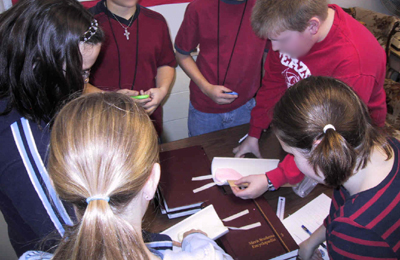
For better Printing: pdf version
Materials:
Ruler
Stopwatch
Refrigerated goo
Room temperature goo
2 u-shaped pipe pieces
books to elevate pipe end

Explore:
1. Elevate one end of each pipe so a slope is created.
The slopes should for each should be the same.
2. Place one of the goo samples at the top of each pipe.
3. Make a mark at the lowest end of the goo. (Use a
pencil!)
4. Set the timer for 5 minutes or more.
5. At the end of the time, mark the lowest end of the
goo.
6. Measure the distance between marks in centimeters.
7. Use the formula below to calculate the rate that
each sample traveled.
8. Clean your marks off of the pipe.
Record and calculate:
|
distance (in centimeters)
time (in seconds) |
= centimeters traveled per second |
| Nearly frozen | Room Temperature |
| ______________ = | ______________= |
Which one travels fastest?_______________slowest?____________
What can this tell you about glaciers?
Why is it important for scientists to find out how fast glaciers move?
Why might they go back and re-test the same spots every year?